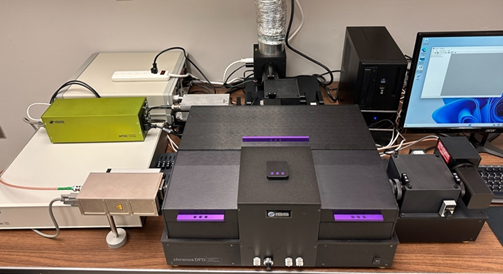Fluorimetry Spectroscopy
Fluorimetry spectroscopy is a widely employed biophysical technique characterized by its nondestructive nature. The method’s high sensitivity, specificity, and reproducibility have established fluorescence spectroscopy as a fundamental tool across various scientific disciplines. It finds extensive applications in fields such as chemistry, medicine, biochemistry, biomedical research, environmental science, pharmaceuticals, and food technology.
In this technique, a sample is excited by an external light source, resulting in the emission of fluorescence. This emitted signal can be analyzed using various methodologies, including steady-state measurements such as fluorescence spectra, total fluorescence intensity, and fluorescence anisotropy (polarization). Additionally, time-resolved fluorescence measurements, which analyze the decay of fluorescence emission (fluorescence lifetime) and the dynamics of anisotropy decay (dynamic anisotropy), further enhance the analytical capabilities of this technique.
The versatility and adaptability of fluorescence spectroscopy contribute to its prominence in contemporary scientific research, enabling detailed investigations into molecular interactions, dynamic processes, and structural characterizations.
Steady-state capabilities:
Fluorescence intensity, emission and excitation spectra and fluorescence anisotropy (L-format).
Time-domain (TCSPC) capabilities:
Fluorescence lifetime and time-resolved anisotropy.
Additional capabilities:
Plate reader for steady-state and time-domain spectroscopy.
Double-syringe, computer-controlled titrator.
Paladini optical cell for high hydrostatic pressure experiments.

